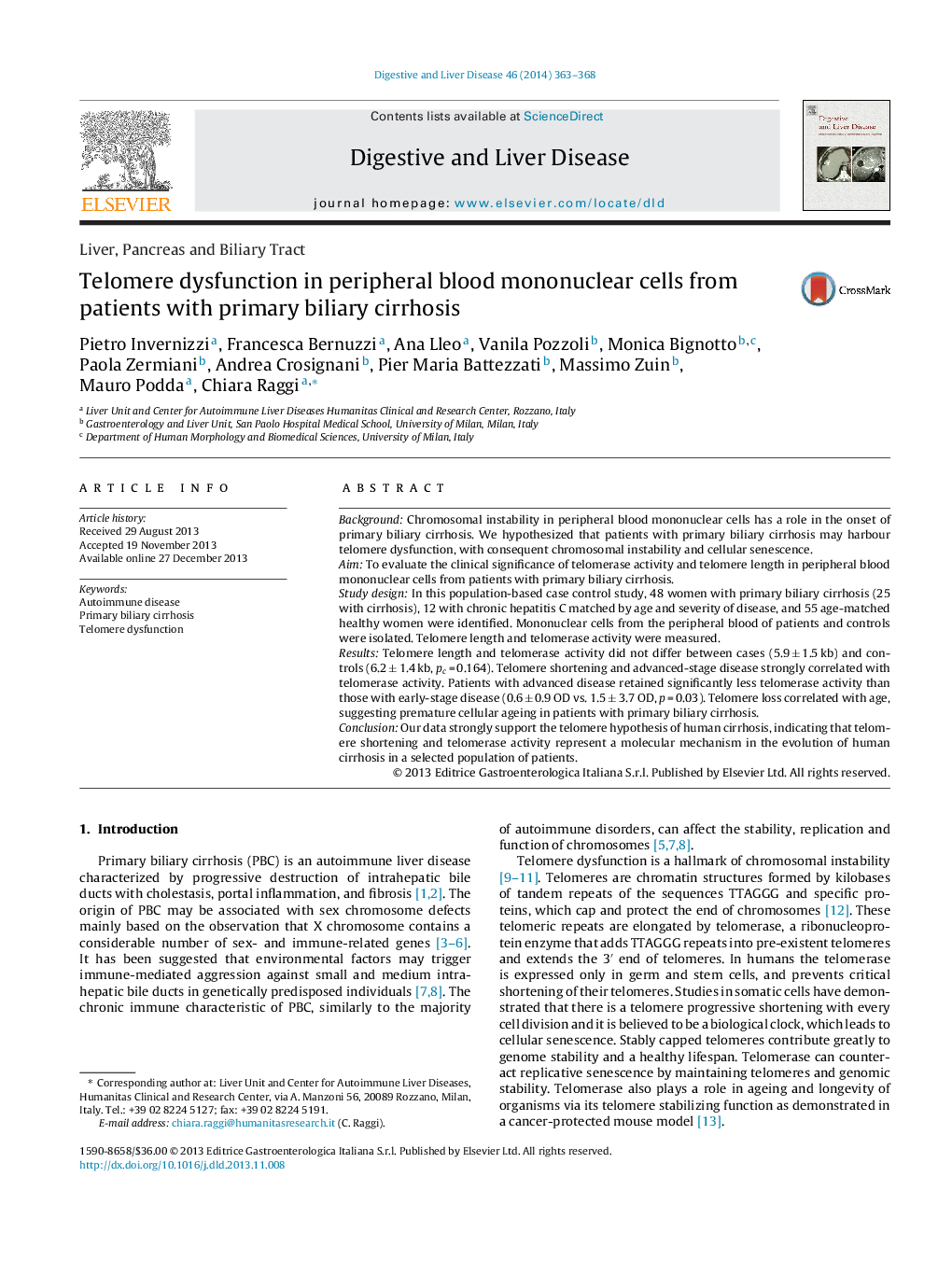| Article ID | Journal | Published Year | Pages | File Type |
|---|---|---|---|---|
| 6088476 | Digestive and Liver Disease | 2014 | 6 Pages |
BackgroundChromosomal instability in peripheral blood mononuclear cells has a role in the onset of primary biliary cirrhosis. We hypothesized that patients with primary biliary cirrhosis may harbour telomere dysfunction, with consequent chromosomal instability and cellular senescence.AimTo evaluate the clinical significance of telomerase activity and telomere length in peripheral blood mononuclear cells from patients with primary biliary cirrhosis.Study designIn this population-based case control study, 48 women with primary biliary cirrhosis (25 with cirrhosis), 12 with chronic hepatitis C matched by age and severity of disease, and 55 age-matched healthy women were identified. Mononuclear cells from the peripheral blood of patients and controls were isolated. Telomere length and telomerase activity were measured.ResultsTelomere length and telomerase activity did not differ between cases (5.9 ± 1.5 kb) and controls (6.2 ± 1.4 kb, pc = 0.164). Telomere shortening and advanced-stage disease strongly correlated with telomerase activity. Patients with advanced disease retained significantly less telomerase activity than those with early-stage disease (0.6 ± 0.9 OD vs. 1.5 ± 3.7 OD, p = 0.03). Telomere loss correlated with age, suggesting premature cellular ageing in patients with primary biliary cirrhosis.ConclusionOur data strongly support the telomere hypothesis of human cirrhosis, indicating that telomere shortening and telomerase activity represent a molecular mechanism in the evolution of human cirrhosis in a selected population of patients.
